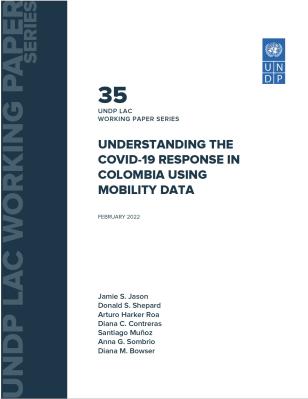Understanding the COVID-19 response in Colombia using Mobility data

Understanding the COVID-19 response in Colombia using Mobility data
February 25, 2022
Despite widespread mobility restrictions to control the COVID-19 pandemic, controlled impact evaluations on their effectiveness are rare. While Colombia imposed a National Lockdown, various national exceptions, additional municipal level restrictions, and irregular adherence created variations across municipalities and over time. We analyzed how weekend and weekday mobility affected COVID-19 cases and deaths and explored other relationships.
Using GRANDATA from the United Nations Development Program (UNDP) by municipality and date, we examined movement in 76 Colombian municipalities, representing 60% of the Colombian population, from March 2, 2020, through October 31, 2020. We combined the mobility data with Colombia’s National Epidemiological Surveillance System (SIVIGILA) and other databases. Statistical analyses generated simulated impacts on the COVID-19 burden.
During the study period, Colombians stayed at home more on weekends compared to weekdays. In highly dense municipalities, people moved less than in less dense municipalities. Overall decreased movement was associated with significant reductions in COVID-19 cases and deaths two weeks later. If mobility had been reduced from the median to the threshold of the best quartile, Colombia would have averted 17,145 cases and 1,209 deaths over 34.9 weeks, reductions of 1.63% and 3.91% respectively. The effects of weekend mobility reductions per 100,000 person years (with 95% confidence intervals) were 6.40 (1.99-9.97) and 4.94 (1.33-19.72) times those of overall reductions for cases and deaths, respectively. Weekend behavior was likely riskier than weekday behavior due to larger gatherings and less social distancing or protective measures.

 Locations
Locations